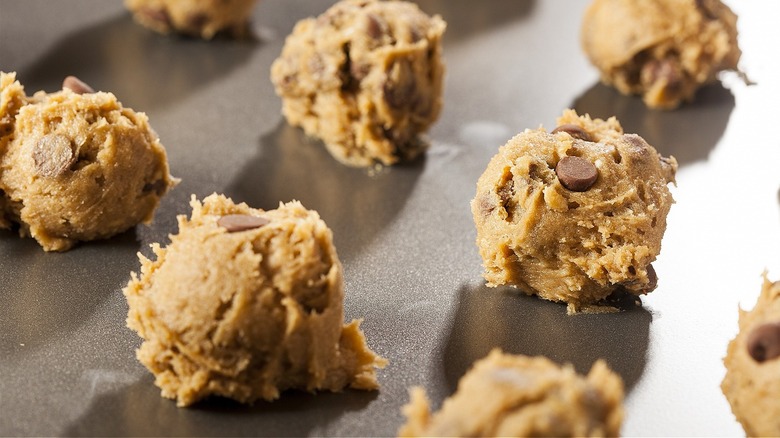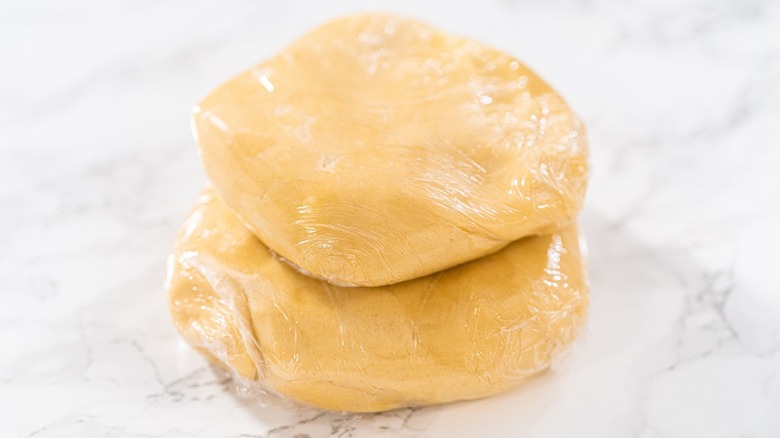Avoid Spreading And Burning By Chilling Your Cookies Before You Bake
You can't rush perfection with baking, especially when it comes to cookies. For most types of cookies, chilling the dough for 30 minutes up to overnight is necessary for the desired outcome in texture, shape, and flavor. In fact, not chilling the cookie dough is one of the biggest mistakes everyone makes when baking cookies because they don't realize how important it is. From now on, think of chilling the dough as a non-negotiable step, especially for rolled, shaped, and drop cookies — ones where it's important that they maintain their shape. Once cookies spread, they are also more susceptible to becoming crispy, or worse, burning.
However, besides just chilling the dough, you should also be chilling the whole baking sheet before it goes into the oven. If you're just chilling your dough, the moment you remove it from the fridge it starts to slowly come to room temperature. This is then expedited once you begin to shape the dough and move it around, whether with your hands or a rolling pin. You may start to feel the dough soften or feel the butter melting on your hands. The quick fix is to get the cookies shaped and on the baking sheet, then pop the baking sheet in the freezer for around 15 minutes. This will help bring the dough's temperature back down again before it goes into the oven. Your cookies will not spread at all, instead coming out with a perfect shape and chewy texture.
The science behind chilling your cookie dough
The necessity of chilling your cookie dough is backed by science. From a strictly visual standpoint, chilling the dough affects the size and shape of the cookie. In fact, this tip is essential for making your cookies look like they came straight out of a bakery. Chilled cookies have a smaller diameter once cooked since they don't spread, and this diameter can shrink even more the longer they are chilled. The reason for this comes down to two factors: fat and flour.
When the fat in the dough — typically butter — is chilled, it will melt slower once it is in the oven, resulting in less spreading of the cookie. As for the flour, giving it time to rest in the fridge will allow its components to hydrate and gluten to develop, which will help the cookies hold their structure and shape. Not only that, this fully developed gluten helps the texture as well, as chewier cookies are accomplished when enough gluten forms in the dough. Time in the fridge or freezer also helps the flavor of the dough because as it sits the flour and sugar have time to soak up moisture, thereby concentrating the cookies' flavors. With so many science-backed advantages, you'll never skip chilling your cookies ever again.

